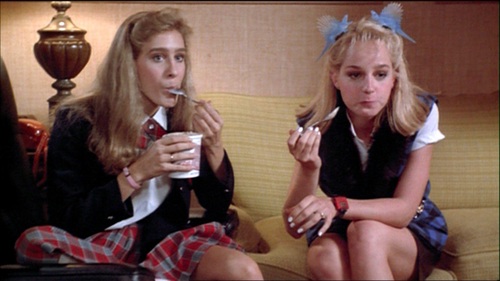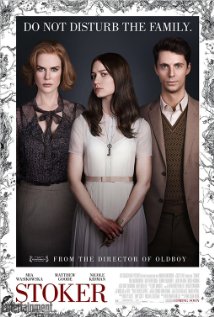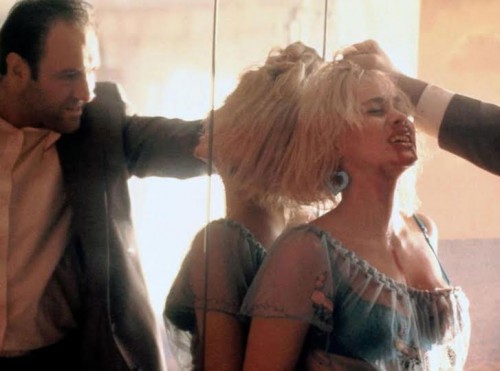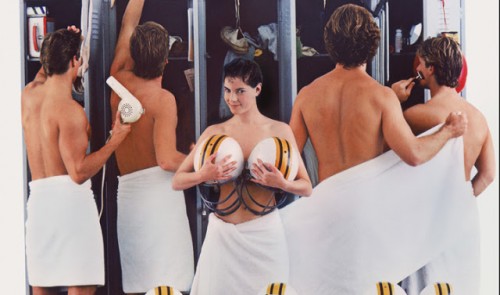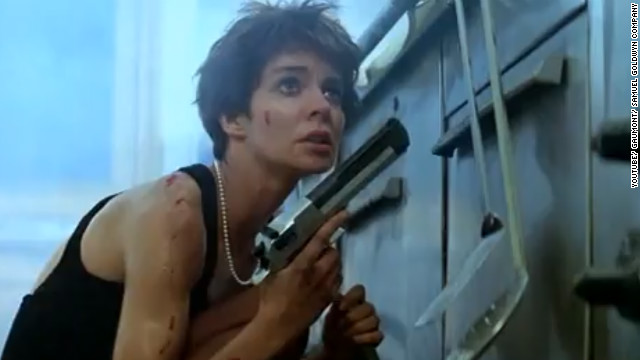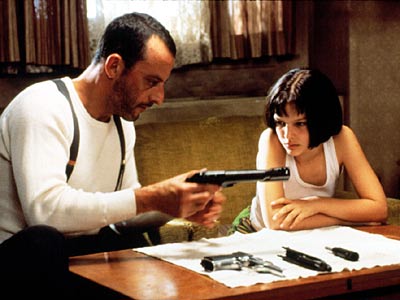This guest post by Shay Revolver appears as part of our theme week on Masculinity.
You’ve probably seen the poster art for Mr. Robot everywhere in the past few weeks. It’s pretty good show and it deserves the attention.

From the very first scene of Mr. Robot you are hooked. You find yourself invested in Elliot’s life. You feel connected with him and you hope that he succeeds. It’s a strong opening for what I feel will be an amazing show. The wait between the sneak preview and the next episode has been torture so I’ve watched the pilot more than once with my partner and my son because I can’t get enough. But somewhere in between each of the viewings I’ve had some thoughts that in some way take a part of my love away. The problem with loving good storytelling and being aware of the varying forms of patriarchy or misogyny in some stories is that once you’ve had a chance to digest a piece of media, you find yourself questioning all the little things that you find problematic and sometimes you can’t tell if it’s just you over analyzing or if there really is a problem there.

That space is where I find myself after seeing and loving Mr. Robot. Rami Malek plays the shy and socially awkward Elliot well. In the beginning of the show he takes down a pedophile and you root for him. Throughout the show he seems to inwardly clash with any of the Alpha males that surround him. Mr. Robot (played by Christian Slater) is as much of an embodiment of a man’s man as Brad Pitt/ Tyler Durden was in Fight Club. This statement is true, minus the Fight Club part, with most of the other men in his life, but they seem express all of the “masculine” traits you’d expect from a cis white male. Elliot, on the other hand, gives off a sense of humanity that makes you feel connected almost instantly as you join him on this adventure through his world. Elliot isn’t your typical male. He doesn’t exude all of the traits that you’d expect in a show’s lead. He’s not incredibly charismatic, he doesn’t put out an err of bravado, he doesn’t even have that uber masculine sense of entitlement. He’s not out swilling beer or doing any of the things you would expect. He is in no way a “man’s man.”

The problem doesn’t come from the viewing of this show, it comes from the aftertaste. Elliot is a traditional lone wolf type of man. He has his own rules and own mind and lives his life according to his own ideals. This makes him a nice contrast Amanda’s boyfriend. He’s the uber masculine type of guy that uses niceness as a weapon. He’s smarmy and even before we got into his indiscretions you couldn’t help but not like this guy. He has all the trademarks of a cis white male frat boy. He oozes all the traditionally masculine character traits that are the hallmark of the patriarchy. He has a sense of entitlement and this cloud of arrogance so thick you could choke on it.
Watching Elliot interact and rebuff him makes you feel like you’re on his side. This is where things start to get a little tricky for me. The thing that feels homey about Elliot is that despite his social awkwardness he generally cares for other people like his best friend Amanda (played by Portia Doubleday) and his therapist Krista (played by Gloria Reuben). The problem isn’t with the caring, the problem is with the way he shows it when they’re not around. In this regard he exudes a hyper masculine sense of over-protectiveness. During one of his exchanges with Amanda’s jerk of a boyfriend, Ollie (played by Ben Rappaprt), you find out that Elliot has been cyber stalking him. He discovered fairly early on that he was cheating on her and had been since shortly after they exchanged “I love yous.” But Elliot hasn’t told her yet. His reasons are self-serving–he doesn’t want to deal with the mess she’ll become after another break-up and he feels like he can “manage” him better than whatever guy she’ll find next. So instead, he keeps this secret from his best friend. This behavior runs parallel with the fact that every time that Amanda seems to be faltering at work, he swoops in to save the day and defend her from anyone who tried to make her seem less that capable. He can’t help himself from trying to save the day, from being a “White Knight.”

I have long had a problem with this archetype both in media and in real life. To me this whole phenomenon of men feeling the desire to swoop in and “Save the Princess” seems to be more of a hindrance to feminism than a companion. Women are not helpless creatures who need protecting, at least not in the White Knight type of way. There is always an undertone in their actions that seem to convey the message that they’re just letting us have our way and will wait in the wings until they have their moment and can save us from ourselves. One of the biggest shows of Elliot’s underlying muber masculine White Knighting actions was him deciding to frame the CTO of E-Corp because he was rude to Amanda. In that moment he had the choice of two envelopes, one leading to the real culprit in the hacks, the other leading to the CTO. He was set to turn in Mr. Robot and his crew until the moment that the CTO kicked Amanda out of the room. Elliot took issue with that and in an effort to “protect” her and “defend her honor” he sets the CTO up to take the fall. I will give the writers credit for what they choose to do with Amanda’s character. To her credit, she calls Elliot on his choice to jump in during a meeting with their bosses to cover for her, she didn’t know to what extent he tried to defend her. But, the scene seems in a way that the show is aware of this element of the dynamic and makes sure that we know it too.

Unfortunately, the problem with the White Knighting doesn’t end there. Elliot is fond of his therapist, Krista, and feels sorry for her and her relationship issues, mainly her trouble finding a suitable man after her divorce. His solution to facilitate keeping her safe and teaching her “to read people” involves him digging up dirt on her current online dating love interest. This is a side note in the pilot episode. Toward the end of the episode, shortly after you realize how awesome this series is going to be, he finds the dirt that he as looking for. Once again, instead of telling her himself, he chooses to confront him and blackmail him into telling her the truth about himself and breaking up with her. In the next scene that his therapist appears in she’s obviously shaken and appears to have been crying. He knows that his plan has worked. She is now “safe” and he seems pleased with his work.

This is another one of the problems that I have with White Knight syndrome. The types prone to exhibiting this behavior tend to have a lower opinion of women that than their outwardly sexist counterparts. White Knights take up the causes of the women in their lives and speak out for them, but it is usually done in a manner that seems to suggest they think that these women are incapable of speaking up for themselves. Elliot unfortunately seems to be as textbook as it comes in this regard. In some ways he seems more sinister in his actions because he seems so nice and unassuming , these traits make it so you don’t realize he’s moving pieces around in the lives of the women in his life.
He is resolute in his thinking that he knows what is best for them and will “protect” them from themselves by any means necessary. He does all of these things from the shadows while outwardly expressing genuine concern.

I can’t tell if Elliot’s behaviors are a sign of the times or if they’re his true feelings left out exposed like a nerve , a gift from the writer expressing the realism of White Knights, and I’m not sure where the show will go from here. I love the premise; the show itself comes off as a cross between Fight Club and Hackers–two of my favorite films–and the writing, direction, and camera work are amazing. I hope that in future episodes the women speak out more and he proves himself as less of a panderer and more of a genuine person whose actions toward the women on the show relay the words that he speaks to them. It’s hard to tell where this characters interactions will take the story, but I hope Elliot evolves into something better than the anti-hero that he is now because, as I said before, the show I plan on watching is phenomenal.

Shay Revolver is an inked vegetarian, mom, feminist, cinephile, insomniac, recovering NYU student, and former roller derby player currently working as a Brooklyn-based microcinema filmmaker, web series creator, and writer. She’s obsessed with most books, especially the Pop Culture and Philosophy series and loves movies and TV shows from low brow to high class. As long as the image is moving she’s all in and believes that everything is worth a watch. She still believes that movies make the best bedtime stories because books are a daytime activity to rev up your engine and once you flip that first page, you have to keep going until you finish it and that is beautiful in its own right. She enjoys talking about the feminist perspective in comic book and gaming culture and the lack of gender equality in mainstream cinema and television productions both on screen and behind the camera. She prides herself on using all (or damn near close) to an all female crew because it’s harder for women to build up their reel. She also thinks that everyone should check out the weekly @bitchflicks twitter chat about feminism and media every Tuesday at 2 because it’s awesome and she loves engaging with other women.
Twitter : @socialslumber13
Tumblr : Shay Revolver








